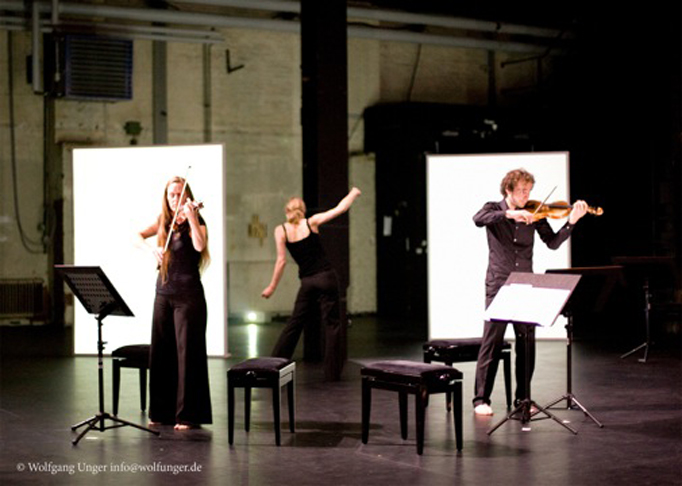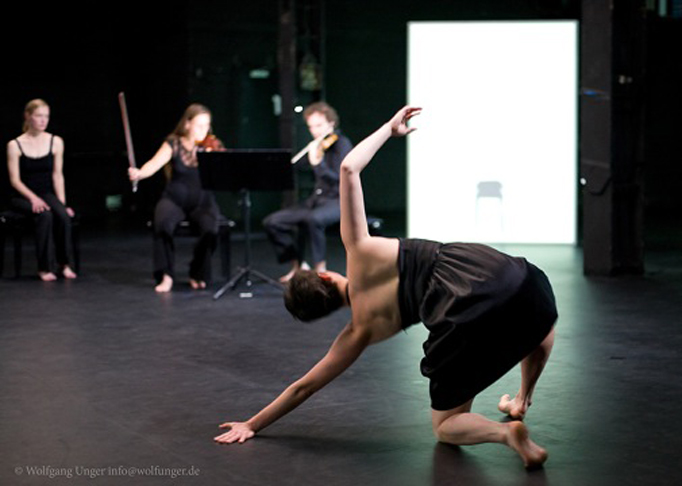Sebastian Matthias has based his choreographic research for DEZETT on John Cage‘s compositions “Three Dances“ for prepared pianos and “String Quartet in four parts“. His specific interest lies in the movements and corporealities the musicians generate while playing the pieces. He has abstracted the characteristics of movements, e.g. the string players‘ manner of bowing and pizzicato or the keystroke of the pianists, and conveyed them into choreographic structures. Similar to his earlier works, that emanated from the existence of an analogy between the tone quality of the music and the movement of the performers, each sound implies a specific corporeality while being performed. The frequency of the movements forms the common base for the connection of music and dance in DEZETT: the dancers‘ movement elements have been developed based on a close observation and analysis of the musicians, resonating with the materiality, shape, mechanics and function of their movements. However, Sebastian Matthias has not used the rhythm or compositional specifications for the dance. Neither did his method trace back to the aleatoric relationship of music and choreography, that was developed by John Cage and his partner Merce Cunningham, renown pioneer of postmodern dance. In DEZETT both art forms meet at eye level, but it is not only through the spectator‘s perception that the dance and music form a whole. Instead, a bond between them has already been developed by producing the shared movements of musicians and dancers, showing the relationship of music and dance from a different perspective.
Diego Agulló‘s videos lift this dialogic cooperation to another level: they replicate the performers two, three and four times; what becomes kinaesthetically palpable onstage can get disembodied and amplified through the filmic gesture. The identity of the musicians and dancers dissolves within the isolation of the pure movement displayed on the video just as it does onstage. Beyond their original role, the pianists and string players of Ensemble Resonanz and the dancers blend into a dectet (DEZETT) of performers, whose complex movement processes become perceptible in specific intensities.
Produced by Kampnagel in cooperation with „NDR Das neue werk“ and Ensemble Resonanz.


